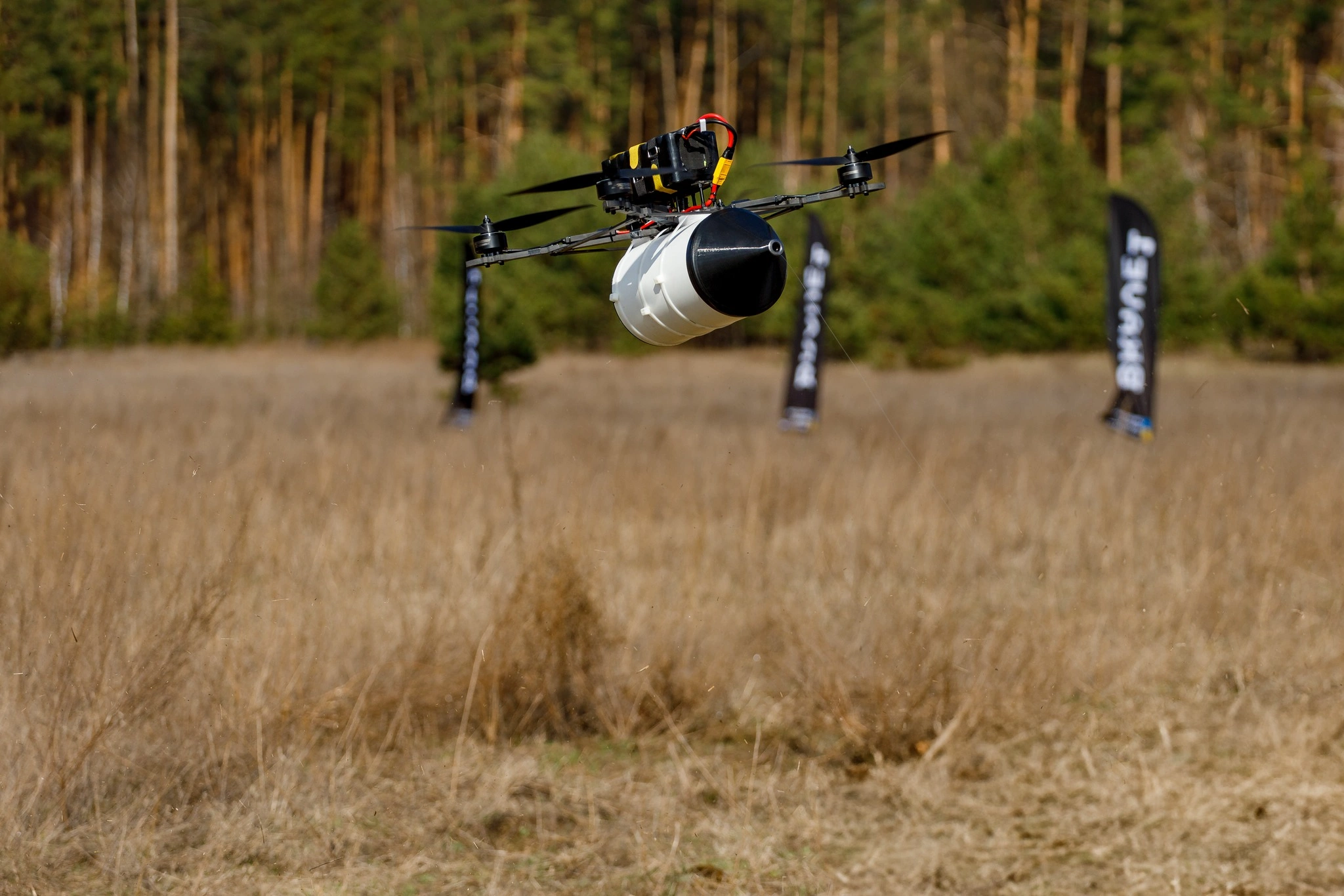New milestone: Ukrainian developers create fibre-optic FPV drones with a range of 20 km

The Ukrainian defence technology cluster Brave1 has tested FPV drones with fibre-optic connectivity at a specialised training ground with the support of the Armed Forces of Ukraine. More than 15 drones from different manufacturers took part in the tests and successfully overcame a route with obstacles of more than 20 km.
Here's What We Know
Thanks to fibre-optic control, drones can perform tasks without the risk of electronic jamming. They do not emit radio waves, which makes them impossible to detect by radio reconnaissance, and operators receive stable communication and high-quality images without the influence of the radio horizon.

Testing an FPV drone with fibre-optic control. Illustration: Brave1
At the same time, seven manufacturers of fibre-optic ground robotic systems (GOS) were tested. Captain Oleksandr Yabchanka, head of the Da Vinci Wolves battalion's robotic systems service, said that fibre optics are a "game changer" in the fight against EW, providing stable communication and expanding the capabilities of ground drones.
At the end of February, it was reported that the company had tested the Silkworm fibre modules, which are installed on air, land and sea drones. FPV drones with these modules retain their manoeuvrability and can cover more than 20 km. There are two versions of the coils: one with a warhead and the other with a built-in battery.

Testing an FPV drone with fibre-optic control. Illustration: Brave1
Source: Brave1